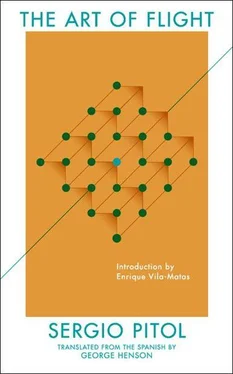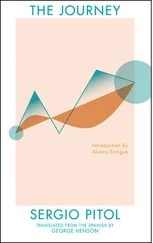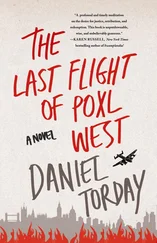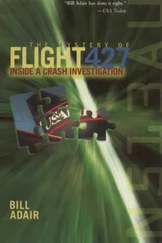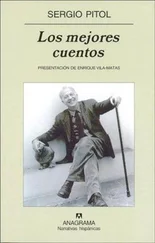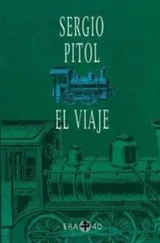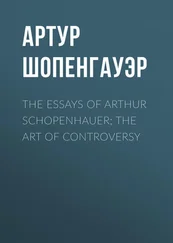Sergio Pitol - The Art of Flight
Здесь есть возможность читать онлайн «Sergio Pitol - The Art of Flight» весь текст электронной книги совершенно бесплатно (целиком полную версию без сокращений). В некоторых случаях можно слушать аудио, скачать через торрент в формате fb2 и присутствует краткое содержание. Год выпуска: 2015, Издательство: Deep Vellum, Жанр: Современная проза, на английском языке. Описание произведения, (предисловие) а так же отзывы посетителей доступны на портале библиотеки ЛибКат.
- Название:The Art of Flight
- Автор:
- Издательство:Deep Vellum
- Жанр:
- Год:2015
- ISBN:нет данных
- Рейтинг книги:5 / 5. Голосов: 1
-
Избранное:Добавить в избранное
- Отзывы:
-
Ваша оценка:
- 100
- 1
- 2
- 3
- 4
- 5
The Art of Flight: краткое содержание, описание и аннотация
Предлагаем к чтению аннотацию, описание, краткое содержание или предисловие (зависит от того, что написал сам автор книги «The Art of Flight»). Если вы не нашли необходимую информацию о книге — напишите в комментариях, мы постараемся отыскать её.
The first work in Pitol's "Trilogy of Memory," The Art of Flight imaginatively blends the genres of fiction and memoir in a Borgesian swirl of contemplation and mystery, expanding our understanding and appreciation of what literature can be and what it can do.
The Art of Flight — читать онлайн бесплатно полную книгу (весь текст) целиком
Ниже представлен текст книги, разбитый по страницам. Система сохранения места последней прочитанной страницы, позволяет с удобством читать онлайн бесплатно книгу «The Art of Flight», без необходимости каждый раз заново искать на чём Вы остановились. Поставьте закладку, и сможете в любой момент перейти на страницу, на которой закончили чтение.
Интервал:
Закладка:
Instead of fading after my first outings, the urge to travel became more obsessive. I began 1961 with a strong sense of annoyance. I was sick of my circumstances and also the world. The press was reporting the unrest that was beginning to alter some young writers in different parts of the world, one of those fevers that appears every few years. They were leaving home, security, work, and undertaking to travel the globe. They were leaving New York and California to settle in Mexico and then taking the leap to Tangier or Marrakesh. Or they settled in Paris, Rome, Capri, Rhodes, Santorini, and sometimes even in a small shantytown in the Philippines or Ceylon. I felt corned in Mexico; I got the bug, sold almost all my books and some paintings, and I hit the road. In the middle of June I boarded a ship in Veracruz and crossed the ocean. I spent a few weeks in London, a few days in Paris, and finally settled in Rome. Like Cervantes, I thought I had reached the undisputed center of the Universe. There I met María Zambrano, who among other things introduced me to Galdós, on whom she was writing memorable pages at the time. I made several trips around Italy, but always returned quickly to Rome, as if any minute spent away would be wasted. For the first time, I felt healthy and immensely free. I was twenty-eight years old and extremely eager to conquer the world. The result of that stay was my return to writing. One night, in a middling café, I began to outline a story that, for better or worse, I am still writing. That trip that was supposed to last a few months lasted twenty-eight years, my age when I arrived in Europe.
My time abroad can be divided into two periods: one that was anarchic, insane, amazing, and always extraordinarily enriching that lasted twelve years; and another, as a member of the diplomatic corps, which spanned the remaining years. During the first, I supported myself however I could and managed to survive with minimal assistance, classes, and editorial activities. I lived in Rome, Peking, Warsaw, Barcelona, and London, each of which left a different mark on my life. In Barcelona I translated for Seix Barral, and at Tusquets edited a collection called Heterodoxos. I remember fondly the work sessions with Beatriz de Moura and other friends in which we spoke with intense enthusiasm about our projects. During a period where the political atmosphere was decidedly orthodox! Of every three or four titles, the censors allowed us to publish maybe one. We lived and worked ignoring the dictatorship. When a Heterodox saw the light of day we celebrated with devotion. During that time, Anagrama was born, and at its first book launch I met Jorge Herralde. We became fast friends. I have translated several books for him, written prologues for others, and later published all my novels with his press. Thanks to the Herralde Prize my work began to be noticed in Mexico. I met Lali Gubern at Leteradura, her wonderful bookstore, and even now the existence of that open space in a period of extreme intolerance seems miraculous. Immediately after being paid for a translation at Seix Barral, I went to Leteradura and headed without hesitation to the table displaying the attractive books from De Donato, the collection that included the Russian formalists and avant-gardists; some of the books I most value: Victor Shklovsky’s Theory of Prose ; the Complete Theater of Mikhail Bulgakov; the three volumes on Tolstoy by Boris Eichenbaum — all came from that splendid table. I visited Luis and María Antonia Goytisolo, Cristina Fernández Cubas, Carlos Trías, Félix de Azúa. On two occasions, I exchanged a few words with Enrique Vila-Matas, although our friendship was born and grew far from Barcelona: in Warsaw, in Paris, in Venezuela’s Mérida, in Morelia, Xalapa, and Veracruz. My second period abroad spans my diplomatic life in Paris, Budapest, Moscow, and Prague. The bond that links both experiences, and which, more precisely, unites every moment in my life, has been literature.
In his diaries, Leo Tolstoy noted that he could only write about what he had known and lived personally. His admirable work draws on the experiences he accumulated during his life; it is a kind of parallel biography. Shortly before his death, the aforementioned Max Beckmann wrote: “I can only say that in art everything is a matter of discrimination, address, and sensibility, regardless of whether it is modern or not. Truth should emanate from work. Truth through nature and a self-discipline of iron.” Like Tolstoy, I can only write about what I have lived. My narratives have been a logbook that records my movements. A spectrum of my preoccupations, happy and unfortunate times, readings, perplexities, and jobs. And, like Beckmann, I am convinced that the lived must submit itself to a process of discrimination. The selection of materials must coincide with the appearance of a form. From that moment on, the form will determine the work’s fate, without giving a damn whether it is modern or not.
For years, I used the settings I visited as a backdrop against which my characters compare who they are (or rather, what they imagine themselves to be) to other values. Usually they are Mexicans living abroad, filmmakers attending a film festival, politicians on vacation in Rome or Venice, Mexican students passing through Vienna, Warsaw, or Samarkand. The cheap exoticism that surrounds them barely matters; what is important is the moral dilemma they contemplate, the value judgment they must make once free of their traditional support, their habits, the alibis that for years they have used in an attempt to numb their conscience.
During my last six years abroad I was an ambassador in Prague, which implied permanent dealings with representatives of power — foreign and domestic officials at the top, in the middle, at the bottom — and with some ambassadors, all with imperial pretensions. They as well as I expressed ourselves in an official and stratified language that feigned grandeur: a conceited language, completely devoid of humor. Shortly after my arrival in Prague, I was invited to an exhibition in celebration of the centenary of Egon Erwin Kisch, who lived in political exile in Mexico during the Second World War. There I saw photos of Kisch with Diego Rivera, Frida Kahlo, Dolores del Río, José Clemente Orozco, and Carlos Chávez, with Polish princes, Mexican politicians, German communist leaders, Spanish refugees, and two Hollywood movie stars, Buster Keaton and Paulette Godard, all gathered at a single celebration. I was struck (and no other verb seems more exact) with the idea to write a novel set in Mexico in 1942, the year in which Mexico declared war on the Axis powers. The novel should at all times be a comedy of errors, an amusing story of mistakes that would inevitably lead down crime alley. Evoking that time, consulting the edition of photographs by the Casasola brothers, remembering the sayings and expressions that were in common use during my childhood, was like a holiday for me. In two weeks, I had the general outline of the novel completed. El desfile del amor (Love’s Parade) seemed to construct itself. I was surprised to see it come together, dictate its own laws and obey them, create its plots and subplots, its hidden relationships. I seemed to hear the protagonists’ voices, detect their specific timbres. I was merely a secretary taking dictation. El desfile del amor introduced me into an area where until then I had only dabbled superficially: parody. I felt transported to the fields of Gombrowicz, those of Bustos-Domecq. As the official language I heard and spoke every day became increasingly more rarefied, to compensate, that of my novel became more animated, sarcastic, and waggish. Every scene was a caricature of real life, that is to say a caricature of a caricature. I took refuge in its laxness. The complete transformation of my narrative world began in earnest. When I finished the novel, I began to jot down a few notes about a possible story that could take place in the town of Tepoztlán, where I would also use vague memories of Rome and Istanbul, a scatological story, with dislocated language, an homage to the absurd, the Spanish género chico , that owes much to barracks humor. It was Domar a la divina Garza (Taming the Divine Heron). It was followed by another, La vida conyugal (Married Life), where in the very proper and measured language employed at the family dinner table when there are respected guests, I describe forty years of joyous marital breakdown. Shortly after finishing it, I discovered that El desfile del amor, Domar a la divina garza, and La vida conyugal formed a natural triptych, without any preconceived idea. The function of the communicating vessels established between the three novels suddenly seemed clear: it tended to reinforce the grotesque vision that sustained them. Everything that aspired to solemnity, canonization, and self-satisfaction careened suddenly into mockery, vulgarity, and derision. A world of masks and disguises prevailed. Every situation, together as well as separate, exemplifies the three fundamental stages that Bakhtin finds in the carnivalesque farce: crowning, uncrowning, and the final scourging. Perhaps the origin of this trilogy goes back almost forty years ago, when I saw the first triptych by Beckmann. As always happens in writing, that long meander, from a few images lost in my memory to setting them down on paper, continues to be a mystery to me.
Читать дальшеИнтервал:
Закладка:
Похожие книги на «The Art of Flight»
Представляем Вашему вниманию похожие книги на «The Art of Flight» списком для выбора. Мы отобрали схожую по названию и смыслу литературу в надежде предоставить читателям больше вариантов отыскать новые, интересные, ещё непрочитанные произведения.
Обсуждение, отзывы о книге «The Art of Flight» и просто собственные мнения читателей. Оставьте ваши комментарии, напишите, что Вы думаете о произведении, его смысле или главных героях. Укажите что конкретно понравилось, а что нет, и почему Вы так считаете.
